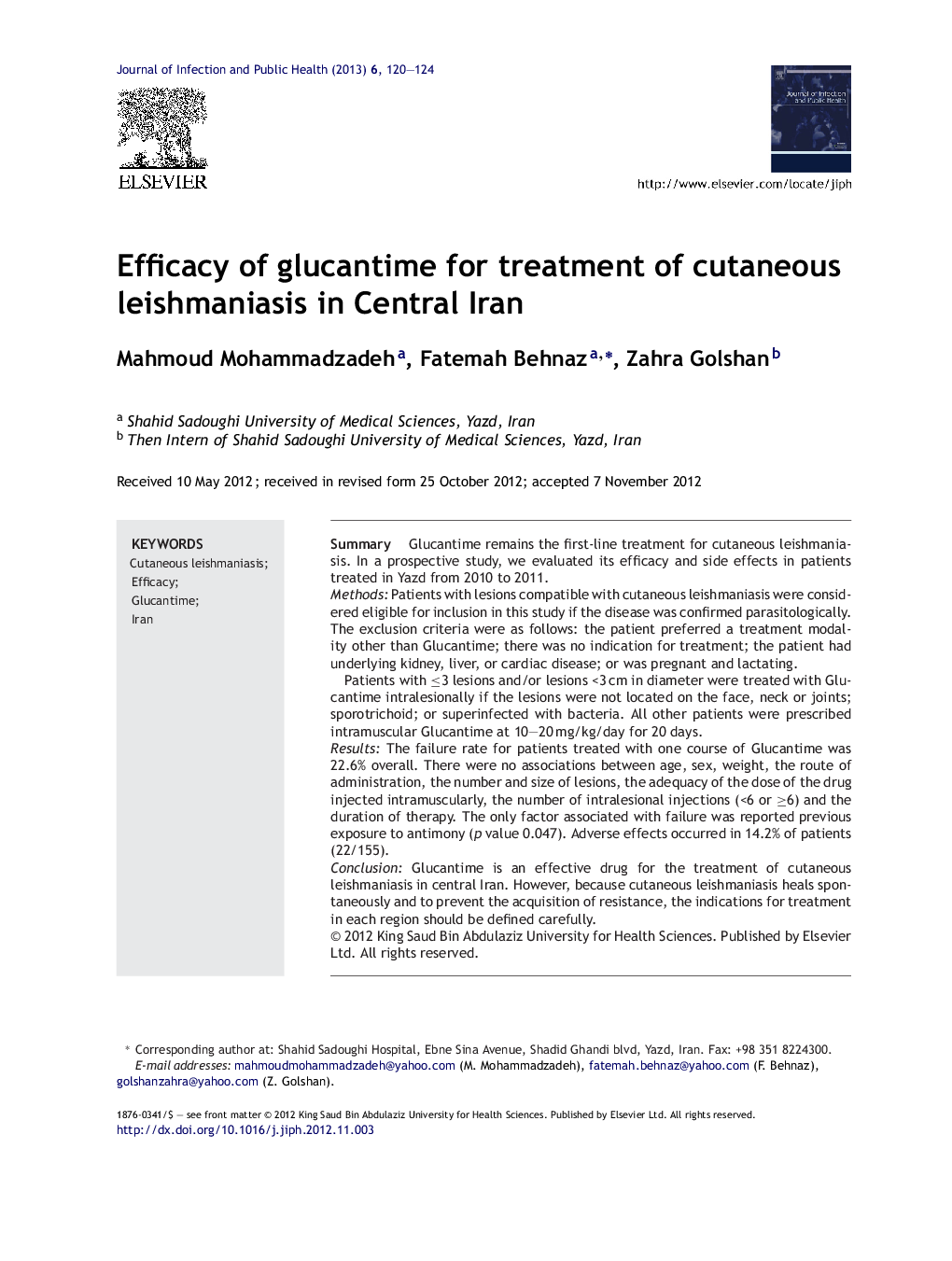| Article ID | Journal | Published Year | Pages | File Type |
|---|---|---|---|---|
| 3405886 | Journal of Infection and Public Health | 2013 | 5 Pages |
SummaryGlucantime remains the first-line treatment for cutaneous leishmaniasis. In a prospective study, we evaluated its efficacy and side effects in patients treated in Yazd from 2010 to 2011.MethodsPatients with lesions compatible with cutaneous leishmaniasis were considered eligible for inclusion in this study if the disease was confirmed parasitologically. The exclusion criteria were as follows: the patient preferred a treatment modality other than Glucantime; there was no indication for treatment; the patient had underlying kidney, liver, or cardiac disease; or was pregnant and lactating.Patients with ≤3 lesions and/or lesions <3 cm in diameter were treated with Glucantime intralesionally if the lesions were not located on the face, neck or joints; sporotrichoid; or superinfected with bacteria. All other patients were prescribed intramuscular Glucantime at 10–20 mg/kg/day for 20 days.ResultsThe failure rate for patients treated with one course of Glucantime was 22.6% overall. There were no associations between age, sex, weight, the route of administration, the number and size of lesions, the adequacy of the dose of the drug injected intramuscularly, the number of intralesional injections (<6 or ≥6) and the duration of therapy. The only factor associated with failure was reported previous exposure to antimony (p value 0.047). Adverse effects occurred in 14.2% of patients (22/155).ConclusionGlucantime is an effective drug for the treatment of cutaneous leishmaniasis in central Iran. However, because cutaneous leishmaniasis heals spontaneously and to prevent the acquisition of resistance, the indications for treatment in each region should be defined carefully.
